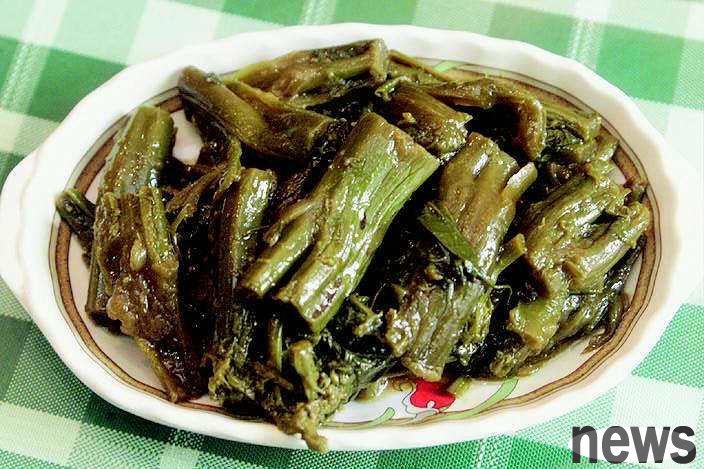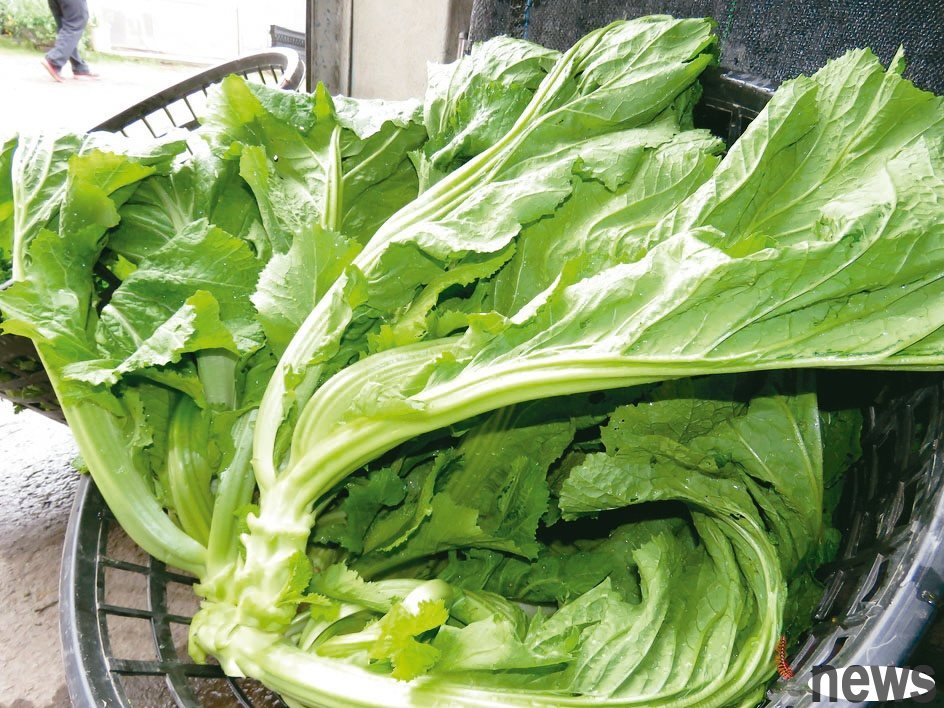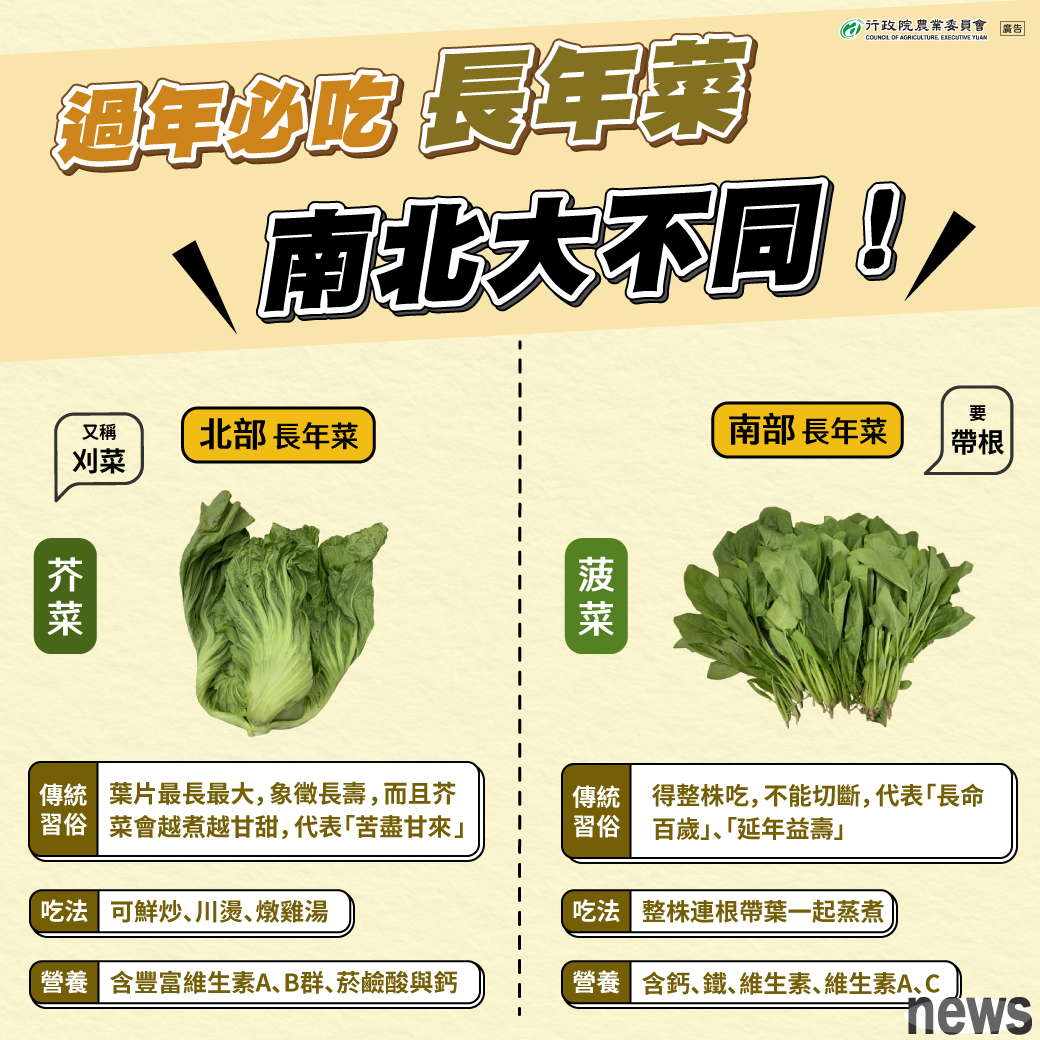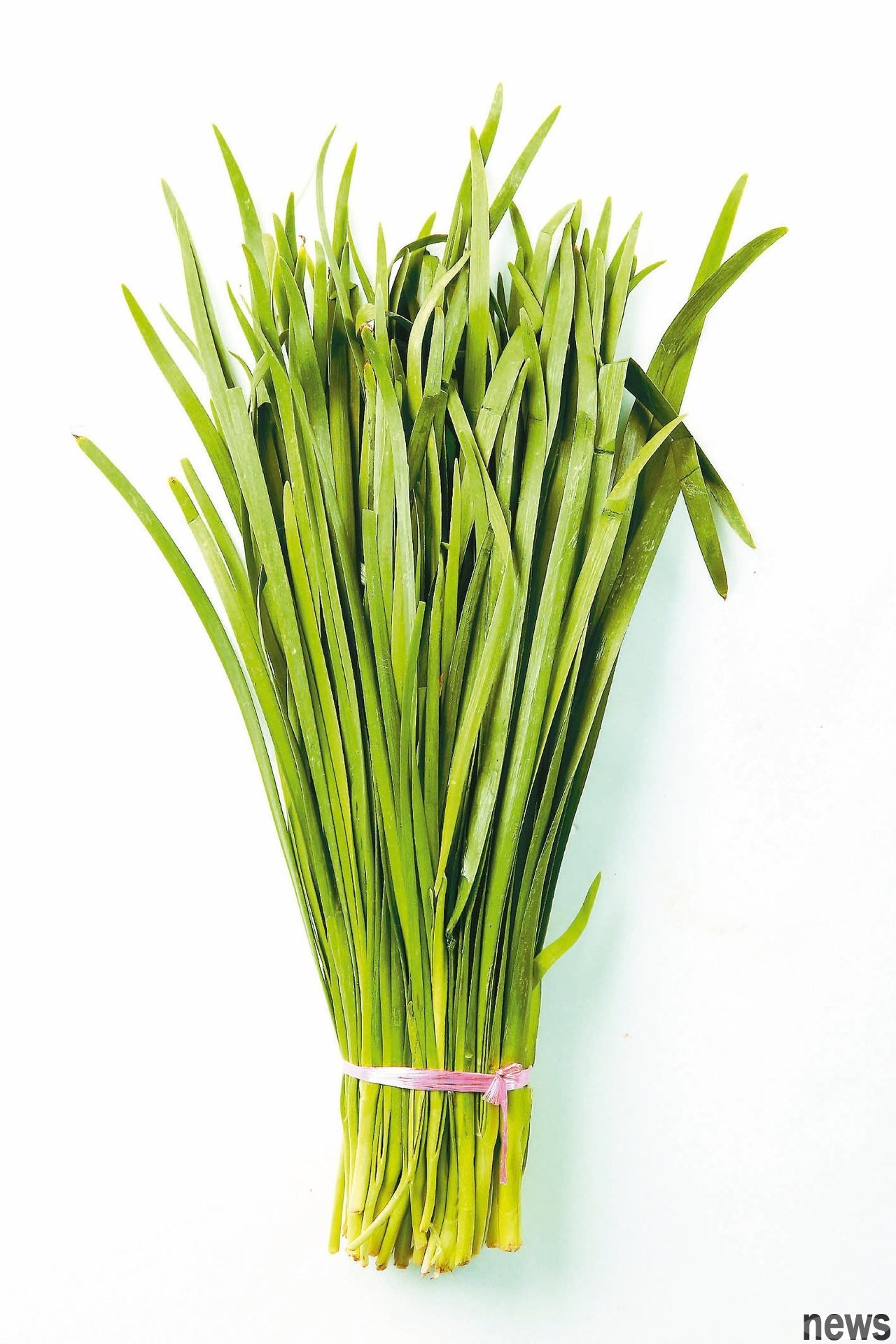One dish that you want to eat every New Year's Eve is "Long-year-old dish". There are actually three types of vegetables called "Long-year-old dish". All three types of long-year-old dishes have the auspicious meaning of the...

One dish that you want to eat every New Year's Eve is "Long-year-old dish". There are actually three types of vegetables called "Long-year-old dish". All three types of long-year-old dishes have the auspicious meaning of the New Year!
1. Northern mustard (cake)The northern long-term vegetables use "mustard green". The northern part here mainly refers to the north of Tainan City. With the migration of ethnic groups, some areas are not so unfair. "Mutton green" is a major vegetable category, which is divided into different categories according to the edible part: mainly divided into "Mutton greens for the application", "Mutton greens for the penis", "Mutton greens for the roots", "Mutton greens for the seeds", etc.
Mustard greens cultivated in Taiwan are mainly mustard greens for use and mustard greens for pendants, especially mustard greens for use, while long-term vegetables mainly use mustard greens for use. In the past, the production period of mustard greens was in winter. After the rice harvest, farmers would feed their own mustard green seeds to the fields and harvest them in about one and a half months.
According to the post of the Agricultural Bureau’s face book, why is “mustard green” called “long-year-old dish”? In the 1930s and 1940s, the ancestors left the countryside for their family farming, and many of them became the long-term workers of farmland landlords. After the second phase of rice harvesting, the long-term workers would rent land from the landlords to grow mustard greens. While watching the mustard greens grow slowly, the days of returning home for the New Year come in detail, the long-term workers worked hard for a long time.
For the sake of warmth, the New Year's Eve can be eaten more than usual on New Year's Eve. The owner will eat leftover heads, chicken necks, chicken feet and chicken bones left by white chickens, paired with winter specialty mustard greens (cooked vegetables) and cut white slices to cook them into long-year dishes. Now, the "Cooked Chicken Soup" is the luxury version of the long-year dishes cooked for long-year dishes in the past.
Another saying is that the leaves of mustard greens are long and large, symbolizing long and solid, and the more you cook, the sweeter you become, the more you cook, it means "bout bitterness and sweetness." Therefore, when eating long-term dishes, you do not eat or chew them, so as to pray for long-term health for your parents. In fact, according to the literature, the tradition of eating mustard greens in the north was at least in the 1871 "Tanshui Temple": "Cooking mustard greens on a bowl on a few bowls on New Year's Eve, it is called the next year's dish." There are already relevant records.

Long-term dishes are also divided into north and south! However, the southern part here mainly refers to Tainan, Kaohsiung and Pingtung, especially non-Hakka villages. The long-term dishes in the south use "rooted spinach". As long as you cook it, it will be delicious after mixing it! Remember to eat it in one bite and bite it, and eat it in one bite, which symbolizes "longevity and longevity" and "longevity and prosperity".
The spinach in long-term dishes has an excessive length, which is about 20 cm. If eaten by children, it can be selected as spinach from small trees. Some people can also choose red spinach for good luck and joy for good luck.
The origin of spinach as a long-term dish was actually very early. In the "General History of Taiwan" written in 1920, "Pineapple: It was produced in the Western Regions, which was accidentally pineapple, or called erineapple. It is a long-term dish called Tainan, which is to eat it for a long time." From this we can see that this custom of eating spinach in the New Year has been around for a long time in Tainan.

Are there often leeks in dishes? On the one hand, spring leeks are fresh and tender, especially in northern China. Most of the time they want to eat leeks only in spring; on the other hand, leeks and longevity are a sympathetic sound. Eating leeks together on New Year's Eve symbolizes that a group of feelings will last for a long time, and the relationship will not dissipate for a long time, which has a very auspicious meaning.
In addition, leeks are long-term crops that can be harvested for at least two years in a row, and can be harvested for a long time, so they have the meaning of long-term crops. Therefore, some areas of China or a few areas in Taiwan (for example, Tainan Jiali) will also use "leeks" to become an adult dish. In ancient "Pen Shu", there is a sentence "Lan Lamb Sacrifices for Lily", and the ancients used lamb spring leeks to worship ancestors.

No matter what kind of long-term dishes your family eats? The important thing is the human nature rich in this custom. The three long-term dishes also have rich nutritional value, and are suitable for physical health.